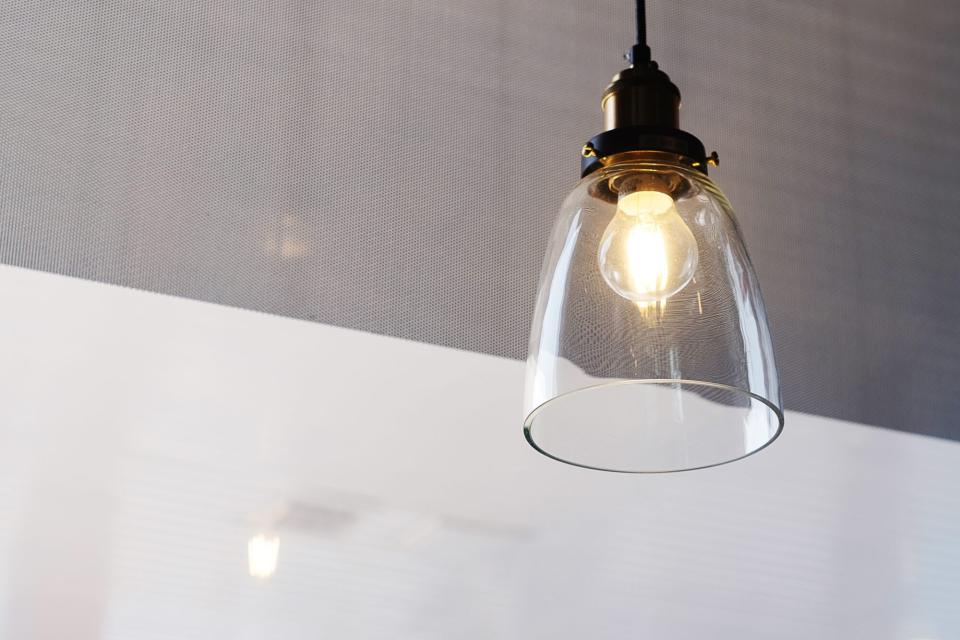Here's How a Light Bulb's Color Temperature Affects the Paint on Your Walls
A room's paint color has a major impact on its ambience, but the light that pours into the space can also dictate how those hues look and feel. Ultimately, there are two ways to illuminate a room: through natural and artificial lighting. You fully control the latter, which is why it's important to take note of your light bulbs' color temperature, which has a direct effect on wall color. Ahead, lighting experts share how to choose the correct light bulb color temperature to properly accent the paint in your home.
Related: The Best Paint Colors to Evoke Any Mood

Khaosai Wongnatthakan / EyeEm / Getty Images
Consider a bulb's Kelvin temperature.
There are two major ways to differentiate between types of light: The Kelvin temperature (this measures the warmness or the coldness of the white light spectrum) and Color Rendering Index, or CRI (this involves the optimal perception of a true color). David Rosenkvist, the chief commercial and creative officer at Louis Poulsen, explains that Kelvin temperature is about coolness and warmth. The color of the light from the sun, particularly in the morning and late evening, and from candlelight tracks at 1800 to 2000 Kelvin; it is warm and white. On the other hand, the light we see from a blue sky without sun is about 7000 Kelvin or more, and is colder. In this vein, a light bulb's temperature either adds a coldness or warmness to the paint color featured in a room. "We like to create what is most suitable for the space," Rosenkvist says of bulb choice. "Our recommendation for private homes is usually to use a light source between 2700 to 3000 Kelvin, which is not as warm as candlelight, but still gives a very pleasant warmth." For spaces like office buildings or workspaces, between 3000 to 4000 Kelvin is best—you can also apply this to home-bound areas dedicated to studying or working.
A lighting source's rating on the Color Rendering Index matters, too.
Your paint color is in its truest form when it is illuminated by natural light, which is how CRI is calculated. "When it comes to CRI, the ideal is 100, which is as close to experiencing objects and color in natural daylight as possible," notes Rosenkvist. "This scale comes from using incandescent lightbulbs as a starting point and working to match LEDs and energy saving bulbs to this." If a light bulb has a low CRI, the paint color might look entirely different (as compared to its natural light tone). He says it's best to use a bulb or LED that's over 90 and as close to 100 on the CRI scale as possible. This way, you will experience the most natural perception of the color your eyes can register.
Use artificial light to enhance your paint color.
If you choose the right artificial lighting for your desired effect, you'll be able to control the hues on your walls, no matter the natural light exposure. Options like the EcoSmart 65-Watt Equivalent BR30 Dimmable Title 20 LED Light Bulb with Selectable Color Temperature Plus DuoBright ($10.92, homedepot.com) have a color temperature feature that allows you to toggle between different lighting schemes that might pair best with your paint. Another tip? Since cool shades (think blues, greens, and grays) appear best with cool, bright lights, daylight bulbs can help these hues look consistent—day or night. Standard soft white light bulbs, on the other hand, offer a warmer, more natural effect. "These light types will make bright colors, such as red, orange, and yellow, slightly more intense and cooler paints, such as green, blue, and gray, appear a little darker or duller," says Sarah Fishburne, the director of trend and design at The Home Depot.

